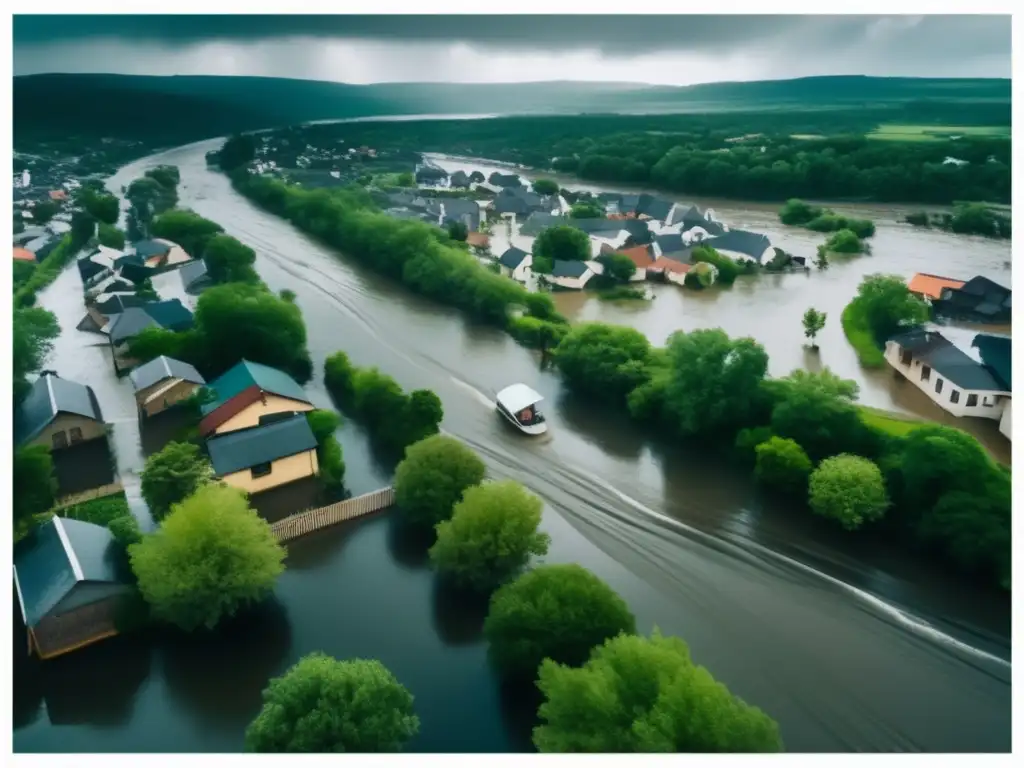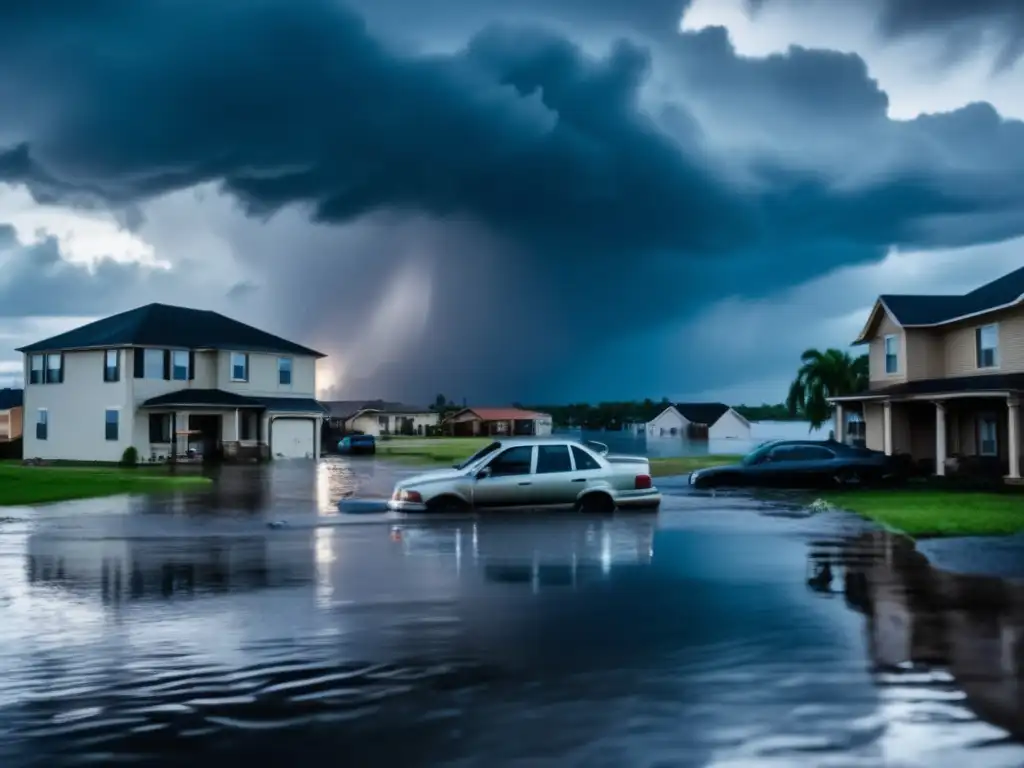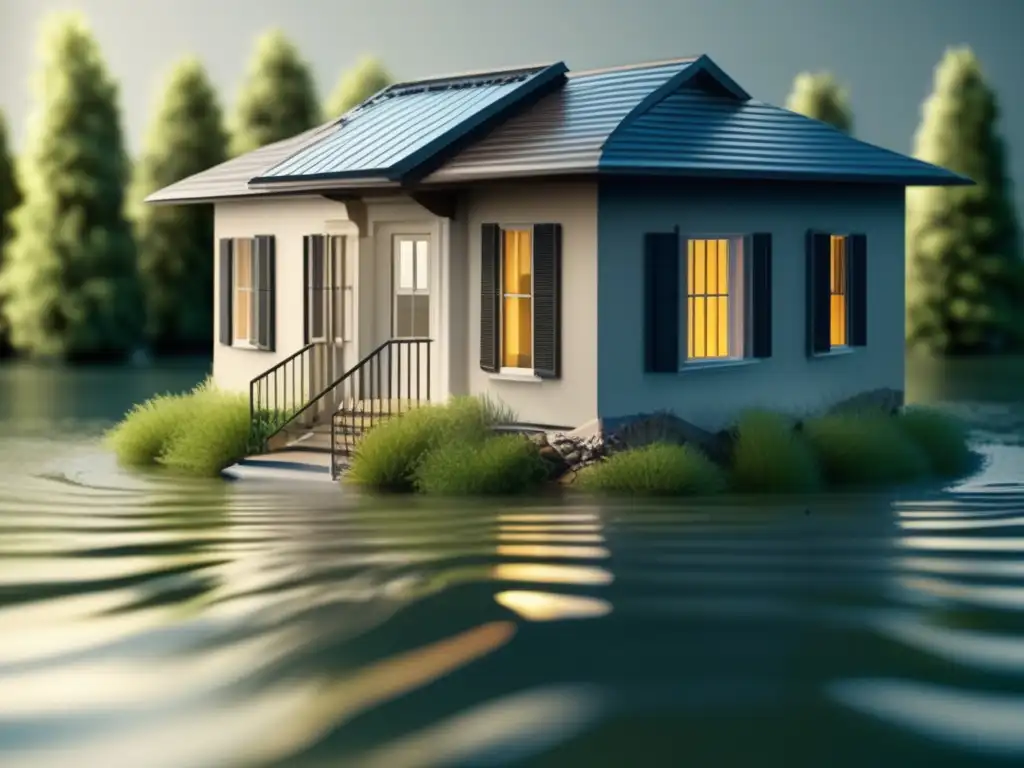Why You Should Consider A Flood Insurance Policy

Why You Should Consider a Flood Insurance Policy
Introduction
When we think of hurricanes, the first things that come to mind are high winds, storm surge, and heavy rainfall. However, floods often accompany hurricanes and are a significant risk to homes and businesses. According to the National Flood Insurance Program (NFIP), floods are the most common natural disaster in the United States, and they cause billions of dollars in damage each year. Therefore, it is essential to consider purchasing a flood insurance policy to protect against potential damages.
The Basics of Flood Insurance

What is Flood Insurance?
Flood insurance is a type of insurance that covers damages caused by flooding. The policy provides protection for your home and belongings if they are damaged by rising water due to a hurricane, heavy rain, or other natural disasters. Flood insurance is not typically included in standard homeowners' insurance policies and must be purchased separately through the NFIP or private insurers.
What Does Flood Insurance Cover?
A flood insurance policy covers damages to your home, personal property, and possessions caused by flooding. The policy covers repairs to structural damage, such as foundation and wall repairs, and replacement of damaged floors, cabinets, and appliances. It also covers the cost of cleaning up after a flood and replacing personal property. However, flood insurance does not cover damages caused by water that enters your home from a leaky roof or broken pipes.
How Much Does Flood Insurance Cost?
The cost of flood insurance varies based on several factors, including the location of your home, the amount of coverage you need, and the flood zone you reside in. The average cost of flood insurance in the United States is around $700 per year, but this can vary widely depending on these factors. The NFIP offers flood insurance policies with coverage of up to $250,000 for residential properties and $500,000 for commercial properties.
The Importance of Flood Insurance in Hurricane-Prone Areas

Flooding Risks in Hurricane-Prone Areas
Hurricane-prone areas, such as coastal communities, are at high risk for flooding due to storm surge and heavy rainfall. Floods can cause significant damage to homes, businesses, and infrastructure. In the United States, approximately 90% of all natural disasters involve some form of flooding, making it crucial for homeowners and business owners to obtain flood insurance to protect against potential damages.
The Benefits of Flood Insurance in Hurricane-Prone Areas
Purchasing flood insurance in hurricane-prone areas is essential for several reasons. Firstly, it provides peace of mind knowing that you have protection against potential damages caused by flooding. Additionally, flood insurance can help cover the costs of repairs and restoration after a hurricane, which can be significant, especially for those without flood insurance. Finally, having flood insurance can make the recovery process after a hurricane less stressful and more manageable.
The Role of the NFIP in Hurricane-Prone Areas
The National Flood Insurance Program (NFIP) plays a critical role in providing flood insurance to residents and businesses in hurricane-prone areas. The program was established in 1968 to help communities manage the risks of flooding and provide affordable flood insurance to its participants. The program issues Standard Flood Insurance Policies, which provide coverage for both the building and its contents. The NFIP also works with communities to create and enforce floodplain management regulations to reduce the risk of floods and minimize losses during hurricane events.
How to Purchase Flood Insurance

Purchasing Flood Insurance through the NFIP
To purchase flood insurance through the NFIP, you must first determine your flood risk. You can do this by using the Flood Insurance Rate Map (FIRM), which shows the areas that are at high risk for flooding. Once you have determined your flood risk, you can contact an insurance agent who sells flood insurance policies from the NFIP. Your insurance agent will help you determine the amount of coverage you need and provide you with a quote for the policy.
Purchasing Flood Insurance through Private Insurers
Private insurers also offer flood insurance policies, which may provide more extensive coverage than the NFIP policies. Private insurers often have higher coverage limits, lower deductibles, and additional coverage options, such as loss of use coverage. However, private flood insurance policies can be more expensive than policies offered through the NFIP. It is recommended that you compare quotes from multiple insurers to find the best policy for your needs.
Frequently Asked Questions

-
Is flood insurance required in hurricane-prone areas?
Flood insurance is not required by law in hurricane-prone areas but is highly recommended for homeowners and business owners to protect against potential damages from floods.
-
Does my homeowners' insurance policy cover flood damage?
No, standard homeowners' insurance policies do not cover damages caused by flooding. You must purchase flood insurance separately to protect against flood damage.
-
What is covered under a flood insurance policy?
A flood insurance policy covers damages to your home, personal property, and possessions caused by flooding. Repairing structural damage, replacing damaged floors, cabinets and appliances, cleaning up after a flood, and replacing personal property are all covered under the policy.
-
How much does flood insurance cost?
The cost of flood insurance varies based on several factors, including the location of your home, the amount of coverage you need, and the flood zone you reside in. The average cost of flood insurance in the United States is around $700 per year.
-
How do I purchase flood insurance?
You can purchase flood insurance through the NFIP by contacting an insurance agent who sells NFIP policies or through private insurers.
Conclusion
Floods are a significant risk to homes and businesses in hurricane-prone areas. Flood insurance can provide protection against potential damages caused by flooding and is highly recommended for homeowners and business owners in these areas. The NFIP plays a vital role in providing affordable flood insurance policies and promoting the management of flood risks in communities. Purchasing flood insurance can make the recovery process after a hurricane less stressful and more manageable. It is essential to compare quotes from multiple insurers to find the best policy for your needs.
We hope that this article has been informative and helpful. If you have any questions or comments, please feel free to share them in the comments section below. Thank you for reading and stay safe!
Additional Resources

 Plywood For Boarding Up Windows
Plywood For Boarding Up Windows The Importance Of First Aid Knowledge During Hurricanes
The Importance Of First Aid Knowledge During Hurricanes Inflatable Boats
Inflatable BoatsIf you want to discover more articles similar to Why You Should Consider A Flood Insurance Policy, you can visit the Hurricane preparedness: category.
Leave a Reply

Articulos relacionados: